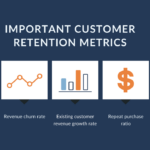How to price your product
Pricing is extremely important – it can define your success in many aspects. Here are our best practices when it comes to answering the question of how to price your product.
From heavily influencing the first impression it gives the consumer, to being one of the main drivers of your bottom-line profits, pricing is surely one of the biggest decisions you will make.
AngelytiX has a formal way of working through both the quantitative and qualitative aspects of pricing which we see as a three factor exercise that covers:
1. Covering expenses: Cost-plus Pricing
The cost of the product plus the required margin you need to cover overheads and profit. This would be called Cost-plus Pricing, and unless making a loss to buy market share (which should be part of the discussion), it is usually the minimum price and starting point on answering how to price your product.
To be clear, covering overheads plus profit needs to be considered at the macro level – not on the per-product basis as it all depends on volume. Cost-plus first looks at costs of the product only – the marginal cost of developing one more product. This price is the absolute minimum sale price – the price at which you will be no better off or worse off if sold at this price. Volume sold and overhead costs then determines how much margin needs to added to each product on average. Not every product needs to have the same margin, but you need to be able to meet overheads and profit from the overall product mix sold. The way in which you add this margin to average out might depend on the other two pricing practices covered in this article.
To accurately build out the margins applied to each product to ensure that per product margin and your net operating margin are as planned, it is important to be as detailed as possible. Getting this wrong can be disastrous.
If you need help with this, an AngelytiX financial consultant can help.
2. Developing market-share: Competitive Pricing
Figuring out your position in a positioning map (explained below) and then pricing based on your position is called Competitive Pricing. You can be priced lower or higher, but there must be strategic reasoning behind it.
To develop a position map first define the characteristics that matter for your product(s)/service(s) to help identify who your competitors are. For example, in the beverage industry, key defining characteristics could include the type of product (alcohol, fruit juice, water derivatives, energy products, sports products, etc), size of beverage, premium/standard/quality perception of product, etc. You want to outline the different characteristics, and identify how your product exactly fits into this market. You also want to determine the purpose or frequency of purchasing (as this may impact consumer’s monthly budget and thus the ability to purchase).
You will then want to make sure you are not in an illogical place in the market – i.e both lower quality and higher price than another main player in the market. Compare your product to others and determine if it is positioned within the marketplace where it should be. Adjust as necessary based on logic as well as any important strategic decisions.
Once you have a good understanding of positioning, you are ready to have a better sense of where you should be competitively priced. Get some strategic help in being objective when developing this positioning map.
3. Consumer-focused: Value-Added Pricing
The value you are providing your customer quantified in some logical way as a tool on how to price your product is called “Value-Added Pricing“.
For example, a new drug may measure its value-add by assessing how much it would cost to undergo any alternative surgery needed without the drug. As another example, consider a pick-up dry-cleaning service: here the service would save people time in dropping off and picking up their own dry cleaning. Therefore, one way to price this would be to understand what this value of time is for the services target market.
How to price your product: putting them all together
Once you understand all three of the above, you are ready to consider all pricing considerations from each different angle. Neither on their own are correct. Each should be considered together to really be able to understand the impact on the pricing decision. These are akin to the business, the market, and the consumer perspectives: they all matter and the optimal price cannot be reached without considering them all.
This is a process that AngelytiX regularly undertakes in partnership with our clients. Contact us if you would like to discuss this process and have a better understanding of your positioning and pricing strategies.
Best,
Lawrence Brown
Managing Consultant | AngelytiX Consulting





